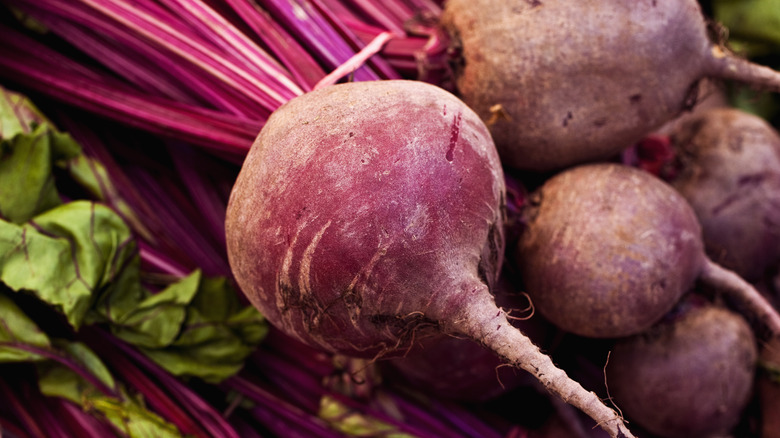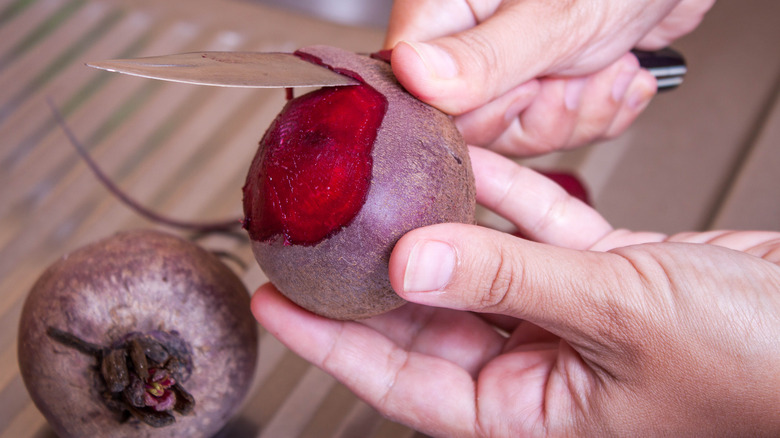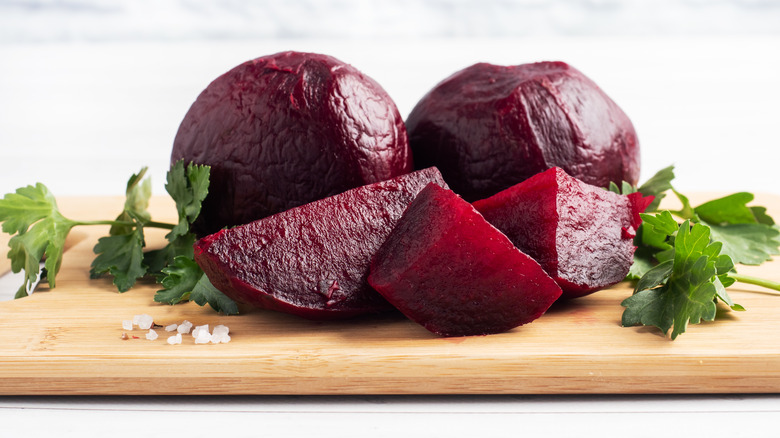The Beet Mistake You're Wasting Effort On
Out of all the root vegetables, beets are some tricky starches. It takes a lot of effort to coax beets out of their dirty, rock-hard natural state and into something earthy and soft and delicious. Once properly prepared, they can be turned into a wonderful beet-forward hummus, used to add vivid color to deviled eggs, blended into borscht or other soup, or used as a marvelous plant-based burger dupe.
But on the way, they're going to stain your hands, wreak havoc on your knives and peelers, and spend an eternity in the roasting pan or in a pot of boiled water before they have any amount of give.
There's a common mistake that many newbie beet lovers make when trying to prepare these delicious veggies though. As counterintuitive as it might sound, given how cooks deal with carrots, potatoes, or celery root, you simply don't want to peel your beets right away. It's much easier to wait until they're nice and soft to remove the skin.
Prep your beets for peeling
Though beets often come dirty and coated in rough skin, trying to peel them before cooking is a waste of your time. When raw, beet skins are nearly impossible to remove from the body of the vegetable, and you will run the risk of hurting yourself. If your knife or peeler slips off the beet — refusing to take purchase on the slippery devil — you may end up peeling off your skin instead.
Instead, scrub your beets as clean as you can, remove the stems, boil them, and then let them simmer for about forty minutes. Add a bit of lemon juice or vinegar to the water to keep them from turning the water bright purple — unless you want to use that same water as a natural dye later!
And be sure to wear gloves while handling beets since they will dye everything they come into contact with. Washing your hands with lemon juice is one way to get out beet stains — though it's not ideal for people with sensitive skin.
When to peel your beets
You'll know that your beets are finished cooking when you can pierce them with a fork or knife. No matter how small, they tend to take longer than you think they will. Once your beets are soft, rinse them in cold water and peel the skins off with your (gloved) hands. They should come off with no problem, and you can even use the scrubby end of a clean sponge if your gloves make this a slippery project.
You can use the exact same method if roasting beets. Just roast them for 40 minutes, then pop the skins right off once they've cooled down.
Unfortunately, there's no peeling hack for raw beets, so if you are making a recipe that calls for them whole, like beet juice or raw beet salad, use a sharp knife and gloves and exert caution. You can eat the skins, which are quite nutritious, but they're pretty bitter and will distract from the natural sweetness of the beets. When peeling, even when using a peeler, never ever peel toward your body — always aim the blade away.



